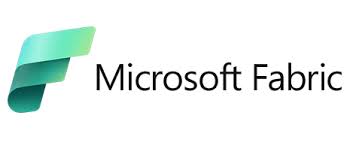In my last blog, I explored how AI is transforming data documentation and metadata management, turning catalogs into intelligent interfaces rather than static repositories. In case you missed it, read it here.
But here’s the next big question: if AI can now generate SQL queries, optimize pipelines, and even explain dashboards in plain English, which modern data platform is leading the way?
That’s what this installment tackles. I will compare how Databricks, Snowflake, and Microsoft Fabric are embedding AI and LLMs directly into their platforms to enhance data engineering and analytics.
Platform-Level AI
AI in data platforms is no longer an “add-on.” It’s being built natively into workflows, shaping how teams code, discover data, and generate insights. Key areas of infusion include:
- Code generation (SQL, Python, ETL)
- Data discovery and lineage automation
- Pipeline optimization
- Model development and deployment
- Natural language interfaces for analytics
Let’s explore how each platform is building these capabilities.

Mosaic AI
- Full-stack framework for LLM development and deployment
- Fine-tuning, evaluation, and scaling
- Integrated with Databricks ML runtime for prompt engineering, Reinforcement Learning from Human Feedback (RLHF), and vector search
Unity Catalog + GenAI
- AI-aware governance & metadata
- Auto-docs, lineage, and discovery
- LLM-aware access control and model context
Use Cases
- Domain-specific copilots
- Generative AI over enterprise data
- Smart assistants in notebooks/dashboards
Differentiators
- Strong ML and LLM pipeline integration
- Open model ecosystem (MLflow, HuggingFace)
- Unified governance with AI context
Best Fit For
- AI/ML practitioners and engineering-driven firms seeking depth and flexibility

Snowpark ML
-
Brings the ability to train and run ML models in Python, Scala, and Java directly in Snowflake
- Reduces data movement with in-database training and inference
- Integrated with feature store and model registry
Cortex
- Prebuilt LLM-powered APIs for SQL developers
- Text generation, summarization, and classification inside Snowflake
- Natural language queries in Snowflake UI
Use Cases
- NLP-based data preparation
- AI-embedded data applications
- Automated insights in dashboards
Differentiators
- No infrastructure management required
- Lightweight AI access via SQL
- Designed for analysts and engineers alike
Best Fit For
SQL-first organizations, BI & analytics teams, and enterprises looking for low-friction AI adoption without complex ML Ops

Microsoft Copilot
- Embedded across Fabric components (Power BI, Data Factory, and Synapse)
- Natural language interface for queries, dataflows, and dashboards
- Suggests transformations, joins, and auto-generates visuals
Semantic Model + OneLake AI Assist
- Unified enterprise semantic model
- AI-driven relationships and discovery
- OneLake as single source of truth
Use Cases
- Conversational BI (natural language Q&A)
- Automated insights in dashboards (AutoNarratives)
- Explaining anomalies and trends in natural language
Differentiators
- Deep integration with Microsoft 365 + Teams
- Low-code/no-code orientation
- Optimized for business and citizen users
Best Fit For
Business-first organizations seeking democratized AI for decision-makers and analysts.
Closing Thoughts
Each platform is charting a distinct path toward AI-augmented data engineering:
- Databricks is the platform of choice for engineering-heavy teams, excelling in full-stack AI/LLM development.
- Snowflake takes a pragmatic approach, embedding AI directly in SQL to serve both developers and analysts.
- Microsoft Fabric democratizes AI, putting natural language capabilities into the hands of business users.
The decision comes down to your team’s maturity, skillset, and role expectations for AI: developer-first, analyst-friendly, or business-embedded.
Looking ahead, we can expect tomorrow’s platforms to converge, blending full-stack AI development, SQL-native simplicity, and business-facing copilots into an unified intelligent ecosystem.

Author
Pragadeesh J
Director – Data Engineering | Neurealm
Pragadeesh J is a seasoned Data Engineering leader with over two decades of experience, and currently serves as the Director of Data Engineering at Neurealm. He brings deep expertise in modern data platforms such as Databricks and Microsoft Fabric. With a strong track record across CPaaS, AdTech, and Publishing domains, he has successfully led large-scale digital transformation and data modernization initiatives. His focus lies in building scalable, governed, and AI-ready data ecosystems in the cloud. As a Microsoft-certified Fabric Data Engineer and Databricks-certified Data Engineering Professional, he is passionate about transforming data complexity into actionable insights and business value.

